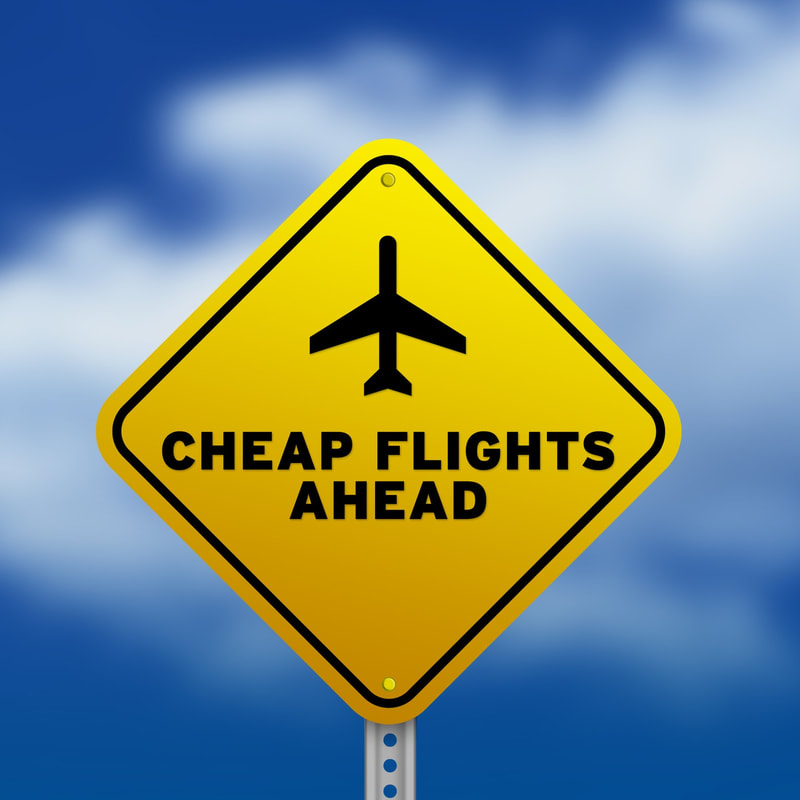Travel transforms lives. The exhilaration of exploring unfamiliar streets, sampling exotic cuisines, and forging new connections around the globe instills a sense of wonder unlike any other. Yet, for many would-be wanderers, the expense of airfare looms as a formidable barrier. What if securing rock-bottom flight deals could become second nature? What if stretching your travel budget didn’t require compromising on comfort or convenience?
In this extensive guide, you’ll uncover proven methods, insider secrets, and advanced hacks to consistently find the lowest possible fares whether you’re booking a domestic weekend escape or embarking on a multi-continent expedition. By the end, you’ll possess a travel-savvy toolkit capable of unlocking amazing adventures, no matter your budget.
Table of Contents
Introduction
The world beckons with an allure that transcends borders, languages, and cultures. Yet ground-to-sky transport typically represents the most significant expense in any travel itinerary. Imagine if you could consistently pay less than half the rack rate for airfare what new adventures might you embark upon? This guide delves deep into the practices of seasoned “fare hackers,” unpacking the psychology and technology behind airline pricing, and equipping you with the strategies and tools to lock in unbeatably low fares.
Over the course of these pages, you’ll learn not only the foundational tactics but also sophisticated methods often reserved for industry insiders. Prepare to transform your travel plans from aspirational to action-packed, all while preserving your budget.
1. Why Cheap Flights Matter
1.1 The Growing Appeal of Experiential Travel
In recent years, travel has shifted from a luxury to a central life priority. Millennials and Gen Z travelers, in particular, place higher value on experiences over material possessions. A sparse airfare budget enables more frequent trips, whether weekend road-trips or extended exotic gets-aways. With cheaper tickets, you can sample local traditions, explore hidden-gem locales, and participate in cultural festivals that might otherwise remain out of reach. As travelers increasingly document their journeys on social media, the hunger for unique, authentic experiences has never been greater and cheap flights serve as the gateway.
1.2 Maximizing Your Travel Budget
Securing lower ticket prices bolsters your overall travel capital. Money saved on airfare can be reallocated toward:
- Immersive local tours led by community guides
- Memorable culinary experiences in famed dining districts
- Additional stopovers enriching multi-leg journeys
- Premium accommodations, spa treatments, or wellness retreats
By reallocating airfare savings, you can elevate the quality of each component of your trip or simply extend your itinerary for additional nights abroad. Families and groups benefit even more dramatically, as collective savings mount across multiple passengers.
1.3 How Affordable Airfare Broadens Horizons
Previously, destinations like Bali, Iceland, or Patagonia carried a premium tag due to limited flight options. Today, aggressive competition and the rise of low-cost carriers have democratized access to bucket-list hotspots. With proper timing and research, you can embark on epic journeys to remote corners of the globe at prices comparable to domestic round-trip fares of a decade ago. In doing so, you open the door to cross-continental exploration and perhaps inception of lifelong passions for trekking, wildlife photography, or humanitarian tourism.
2. Airline Pricing Demystified
2.1 The Economics of Airline Revenue Management
Airlines deploy advanced revenue management algorithms often called “yield management” that continually adjust ticket prices based on real-time booking patterns, historical data, competitor actions, and projected demand. These systems aim to balance maximizing revenue per seat with ensuring as many seats are filled as possible. Rather than a fixed price, you see only a snapshot of what the algorithm deems the optimal fare at that precise instant. Under the hood, airlines assign fare buckets denoted by letters (e.g., “Y,” “M,” “Q”) each corresponding to specific rules around refunds, changes, and upgrades.
2.2 Fare Classes and Booking Codes Explained
When you search for a flight, the displayed fare embodies only one class of service within a broader fare continuum. For a single cabin say, economy airlines may have numerous fare classes, each with restrictions on cancellations, baggage, seat selection, and refunds. Premium economy, business, and first class likewise split into various buckets. By learning codes and fare-class hierarchies, seasoned travelers can sometimes use mileage upgrades or pay small increments to move into less restrictive classes or secure additional perks.
2.3 Seasonal Demand and Dynamic Pricing
Demand spikes occur predictably around holidays, school vacations, and major events (music festivals, sporting championships). Fares tend to rise in the months leading up to peak seasons and plummet in the weeks immediately following. Off-peak travel windows mid-week flights in shoulder seasons often yield the biggest discounts. Monitoring historical fare data and knowing festival schedules or local holiday calendars empowers you to plan trips during cost-effective windows.
2.4 Competition, Market Entry, and Fare Wars
Whenever a new airline launches a route, or an existing carrier introduces additional capacity, incumbents frequently initiate fare wars to protect market share. These battles manifest as flash sales and deeply discounted promotional fares. Airports served exclusively by one carrier tend to have higher premiums, whereas routes with multiple operators typically remain competitive. Staying abreast of route inaugurations via airline press releases or aviation news sites provides an early indicator of when fare battles might erupt.
3. Fundamental Strategies for Low-Cost Tickets
3.1 Flexibility: Your Greatest Asset
Flexibility underlies all successful fare-finding efforts. Even small adjustments to departure or return dates shifting your itinerary by one or two days can translate to hundreds in savings. Similarly, consider nearby alternative airports. Smaller regional airports often impose lower fees and taxes and may offer substantially cheaper fares, albeit with a slightly longer ground transfer. Embracing open-jaw itineraries, where you fly into one city and depart from another, further broadens your options and can reduce per-leg costs.
3.1.1 Embracing Off-Peak Windows
Whenever possible, travel outside holiday closures and summer breaks. Shoulder seasons like late April to early June and September to mid-October often deliver optimal climate conditions across many destinations while maintaining moderate airfare levels. Not only are tickets cheaper, but hotels and tour operators frequently extend off-season discounts, amplifying your overall savings.
3.1.2 Red-Eye Flights and Unconventional Layovers
Overnight flights commonly known as red-eyes are seldom romanticized but can yield significant fare advantages. They allow you to travel while you sleep, conserving daylight hours at your destination and occasionally obviating the need for one night in a hotel. Similarly, longer layovers, though initially inconvenient, present opportunities for “stopover tourism” on long-haul flights. Effectively, you notch two trips for the price of one ticket just ensure you check visa requirements and allow sufficient buffer time for customs and immigration.
3.2 Mastering Timing: When to Book
Contrary to clickbait headlines touting “the best day of the week” to purchase tickets, empirical research reveals more nuanced patterns. On average, domestic carriers in developed markets yield cheapest seats when you book roughly six to eight weeks before departure. For international travel, the ideal booking window often extends to three to six months in advance. Nonetheless, algorithms refresh and release new fare buckets daily, so setting up continual price monitoring rather than calendaring a single booking date reaps more consistent savings.
3.3 Leveraging Meta-Search Engines and OTAs
Meta-search engines like Google Flights, Skyscanner, and Momondo aggregate fares from a wide array of carriers and online travel agencies (OTAs). They present interactive calendars highlighting the lowest-fare days, enable multi-city bookings, and allow you to filter by layover duration, preferred airline, and alliance. OTAs sometimes carry exclusive negotiated rates with airlines, so cross-referencing between the carrier’s own website and at least one or two OTAs ensures you locate the absolute lowest published fare.
3.4 Utilizing Fare Alerts and Price Trackers
Fare-tracking tools automatically notify you when prices dip below set thresholds. Google Flights’ price tracking feature emails you alerts for your specified route and dates. Kayak’s “Price Forecast” tool even predicts whether prices are likely to rise or fall based on historical trends. For truly aggressive deal hunters, third-party alert services like Airfarewatchdog, The Flight Deal, and Secret Flying broadcast time-sensitive promotions and error fares directly to your inbox or social channels.
4. Loyalty Programs and Credit Card Hacks
4.1 Choosing the Right Frequent-Flyer Program
Enrolling in a frequent-flyer program is free and essential. Focus on carriers and alliances that match your typical travel patterns. Accrue miles on flights as well as on partner purchases hotels, car rentals, dining programs, and retail partners. Before ticketing, evaluate whether it’s more cost-effective to pay cash or redeem miles, bearing in mind taxes and fees on award bookings can sometimes erode the apparent value.
4.2 Maximizing Credit Card Sign-Up Bonuses
Co-branded airline credit cards and transferable-points cards (e.g., those offered by major banks) present lucrative welcome bonuses, often equivalent to one or two free round-trip domestic tickets. Meticulously meet minimum spend thresholds to unlock these offers, and channel your everyday spending—groceries, utilities, streaming services through these cards. Additionally, leverage category bonuses (e.g., 5× points on dining or travel) to fast-track point accumulation.
4.3 Status Matches and Elite Benefits
Even mid-tier elite status confers valuable perks priority boarding, complimentary upgrades, waived baggage fees, and access to exclusive sale prices. Airlines periodically offer status matches where you can trade your loyalty status from one carrier for a comparable status on another. While status benefits vary, the ability to avoid ancillary fees (checked bags, seat assignments) further reduces your overall travel spend.
4.4 Award Chart Sweet Spots and Stopovers
Every airline alliance maintains an award chart detailing the mileage requirements for various regions. Identifying “sweet spots”—routes where required miles align favorably with cash prices—yields the highest redemption value. Some programs also permit free or low-cost stopovers on round-trip awards, enabling dual-city trips for minimal incremental mileage. By understanding the idiosyncrasies of each program, you can craft exceptional itineraries for a fraction of the cash cost.
5. Advanced and Lesser-Known Tactics
5.1 Currency Arbitrage for Foreign-Priced Fares
Airlines inadvertently price seats differently depending on the booking currency and locale. By accessing localized versions of an airline website often through private browsing or a VPN you can uncover fares priced in weaker currencies that translate to substantial savings when converted. Always account for foreign transaction fees, and ensure your bank offers competitive exchange rates. Bookings must align exactly with the desired currency site; mixing payment methods can invalidate the fare.
5.2 Hidden City Ticketing: Risks and Rewards
Hidden city ticketing involves booking a flight where your intended destination is a layover rather than the terminus. Since one-way fares that continue to less popular endpoints can be higher, this tactic leverages cheaper two-leg segments. While it can yield up to 50% savings, the approach carries baggage limitations (only carry-on), potential ticket cancellation by airlines, and violation of contract of carriage. Use sparingly and primarily on one-way journeys.
5.3 Error Fares and Glitches: How to Move Fast
Human errors or technical glitches occasionally result in fares thousands below market rates. These “error fares” disappear as quickly as they appear, so speed is paramount. Services like Secret Flying and The Flight Deal consolidate such flukes and broadcast them. When you spot an error fare, act immediately—but choose booking options that allow for free cancellation, just in case the airline nullifies the tickets. Even if a ticket is voided, airlines sometimes honor them, so the potential upside is immense.
5.4 Fuel Dumping and Back-to-Back Tickets
Fuel dumping leverages routing quirks where additional segments trigger separate taxation rules, significantly lowering the fuel surcharge component of the fare. Similarly, back-to-back ticketing involves booking two overlapping round-trip tickets to preserve return leg flexibility without incurring high change fees. These are complex strategies, often requiring specialized knowledge and software. Unless you travel extremely frequently, the marginal savings may not justify the operational intricacy.
6. Tactical Tools and Technology
6.1 Browser Add-Ons and Plug-Ins
Chrome and Firefox add-ons like “Honey,” “Skyscanner Everywhere,” and “Matrix ITA” enhance your fare-searching workflow. They can automatically apply coupon codes, scan for the cheapest destinations worldwide, and tap into the powerful ITA Matrix engine an advanced flight search interface originally developed for professional travel agents. By automating parts of your search, these tools free you to focus on strategic decision-making.
6.2 VPNs and Geo-Targeted Searches
Implementing a VPN to simulate booking from different countries can expose lower fares priced for local markets. A VPN also helps mask your device’s cookie history, preventing price inflation based on repeated searches. Combine this tactic with your choice of private or incognito browsing to minimize dynamic fare inflation triggered by your own search patterns.
6.3 Mobile Apps Versus Desktop Sites
Airlines and OTAs sometimes offer app-exclusive flash deals not visible on desktop. Installing apps like Hopper can unlock additional savings through predictive analytics and app-only price freezes. However, in some regions, desktop fares remain cheaper due to currency conversion quirks. Experiment across platforms to ensure you capture the most advantageous price.
6.4 Social Media and Deal Forums
Twitter, Facebook groups, and Reddit subforums (r/awardtravel, r/travelhacks) teem with real-time deal alerts from fellow travelers. By engaging with these communities, you gain access to collective intelligence—members often share promo codes, route hacks, and upcoming sale windows. Network selectively to receive only high-quality, verified deal alerts, and contribute back when you discover your own bargains.
7. Case Studies: Real-World Savings
7.1 Transatlantic Triumph: New York to London
Emma, a remote software developer based in New York, eyed London for a cultural immersion trip. Typical round-trip fares hovered around $900–$1,200. By monitoring Google Flights and setting a $650 price alert, she detected a temporary dip triggered by a competitor’s sale. She pounced within the first 24 hours, securing tickets at $620 round-trip. She then used credit card points to upgrade one segment to premium economy, resulting in a remarkably comfortable transatlantic crossing.
7.2 Southeast Asia Sojourn for Under $400
Derek and Chloe sought a budget-friendly tour of Southeast Asia. Lacking direct flights, they booked a multi-city itinerary: Los Angeles to Tokyo, Tokyo to Bangkok, and Bangkok back to LAX. By employing an open-jaw and multi-city search on Momondo, they assembled an itinerary for just $378 total. This unlocked four distinct legs, with built-in stopovers and an opportunity to explore Osaka en route.
7.3 South American Circuit on a Shoestring
Natalia, an avid backpacker, wanted to explore Brazil, Argentina, and Chile in one trip. She found a “circle trip” error fare that priced multiple legs at a combined rate far below separate itineraries. Despite the risk, she booked immediately pays off with a $510 ticket covering Rio de Janeiro, Buenos Aires, and Santiago. She traveled two weeks without breaking her bank, attributing the success to constant price-watch diligence and readiness to act.
8. Sample Workflow: From Dream to Departure
Assemble all the techniques above into a repeatable process:
- Define your travel goals, timing flexibility, and budget ceiling.
- Research historical fare trends for your route via Google Flights calendar.
- Set fare alerts and subscribe to deal newsletters pertinent to your origin and destination cities.
- Explore multi-city and open-jaw options through OTAs and the ITA Matrix.
- Toggle between desktop, mobile app, and VPN sessions to compare prices across currencies.
- Evaluate loyalty program redemptions versus cash purchases, factoring in taxes and fees.
- Book using a card that maximizes travel rewards and offers dispute protection.
- Monitor post-booking for lower fares; if significantly lower, consider canceling and rebooking if it’s fee-free.
- Check visa and transit requirements for every stopover in your itinerary.
- Finalize seat assignments strategically bulkhead seats for legroom, aisle seats for quick exits.
9. Common Pitfalls and How to Avoid Them
Even the savviest travelers stumble occasionally. Avoid these traps:
- Overlooking Additional Fees: Basic economy deals may appear tempting but often exclude carry-on baggage and seat selection.
- Ignoring Layover Visa Requirements: Long layovers may necessitate transit visas, adding unforeseen expenses.
- Falling Victim to Dynamic Price Inflation: Repeated searches without private browsing can push fares upward.
- Misjudging Cancellation Policies: Non-refundable tickets can cost you far more if plans change. Always review fare rules in detail.
- Chasing Every Flash Deal: Not every sale aligns with your ideal itinerary. Focus on opportunities that match your travel objectives rather than impulsively pouncing on irrelevant routes.
10. Empower Your Next Journey
Securing cheap flights represents more than budgetary disciplineit embodies the freedom to explore without financial constraints. Armed with the strategies laid out here from basic flexibility tips to advanced fare-hacking techniques you can take command of your travel planning and unleash a world of possibility. Whether you’re chasing northern lights in Iceland, sampling street food in Vietnam, or reuniting with family halfway across the planet, let affordable airfare be the catalyst that turns your travel ambitions into reality. Happy flying!



